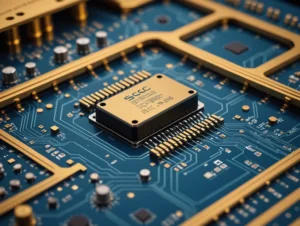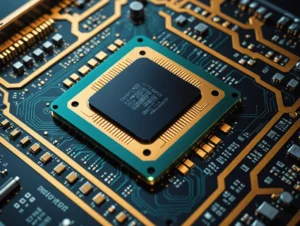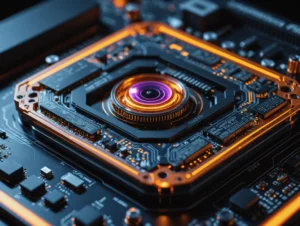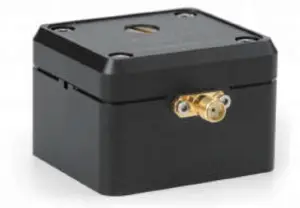Silicon photonics represents one of the most exciting frontiers in both research and industry. As technology advances and demands for faster, more efficient data transfer continue to grow, silicon photonics is opening up a multitude of opportunities, especially in device engineering, system-level innovation, and fabless manufacturing. These areas present significant growth potential in communications, sensing, and computational technologies.
Device Engineering: A Core Focus
At the heart of silicon photonics research is device engineering, which has accounted for a vast majority of published work to date. Device engineering efforts focus on creating high-performance photonic devices integrated with silicon technology, answering the critical question: What are the best photonic devices that can be built using silicon?
Several key breakthroughs have been made in silicon Mach-Zehnder modulators, which are now competitive with traditional lithium niobate devices across a wide range of applications. These silicon-based modulators continue to improve each year, showcasing the potential of silicon to rival other materials in performance. Furthermore, germanium waveguide-coupled photodiodes have become highly competitive with traditional uncooled photodetectors in the near-infrared spectrum.
Silicon-nitride waveguides, known for their low loss and high compatibility with large-scale photonic integration, are another significant advancement. These waveguides are increasingly being integrated into silicon photonics systems, helping to reduce signal loss and increase efficiency. Additionally, low-loss fiber couplers and high-performance passive optics are now part of the silicon photonics ecosystem, with lasers also being demonstrated within silicon systems through III-V material packaging. However, germanium lasers—although recently demonstrated—still face challenges in efficiency, limiting their widespread competitiveness.
The close simulation-prototyping loop that exists in academic settings has been a significant advantage for device engineering. Universities have become key centers of innovation, as they can quickly iterate through the simulation-fabrication-test cycle, creating rapid advancements in prototype development.
Photonic System Engineering: Moving Beyond Devices
While device engineering is crucial, the second major opportunity lies in photonic system engineering. Here, the question shifts from individual devices to broader systems. Once a stable and accessible infrastructure is established, enabling a wide variety of photonic devices to be incorporated as library elements, the challenge becomes: How do we combine these elements to build useful systems?
Rather than relying on the traditional approach of packaging individual devices as discrete components, system-level design leverages the scalability of silicon processing. By building integrated systems instead of focusing on standalone devices, engineers can tap into the true potential of silicon photonics. This shift represents a crucial sea change in the field, as the focus moves toward creating application-specific photonic integrated circuits (AS-PICs) that combine multiple photonic devices on a single chip.
The fabless silicon photonics ecosystem is key to making this transition smoother. Foundry service providers offer design kits (PDKs) that include fixed designs for leading-edge photonic devices, such as modulators and detectors. These PDKs enable engineers to focus on system integration rather than individual device design. By using the photonic-electronic co-design process, designers can blend the functionalities of traditionally separate photonic and electronic devices, creating cutting-edge solutions for communications and other high-performance systems.
Transitioning from Prototypes to Production
As the silicon photonics ecosystem grows, the focus will naturally shift toward creating a smooth transition from prototype development to production. This transition is a critical challenge for the fabless silicon photonics community. The ability to rapidly prototype AS-PICs (Application-Specific Photonic Integrated Circuits) and move them into production will drive innovation in telecommunications, data centers, and beyond.
A significant opportunity exists in process standardization and the expansion of multi-project wafer (MPW) services. These services allow multiple projects to share wafer space, reducing the cost and time required for production. As more industries and research institutions gain access to MPW services, the development cycle for photonic devices will accelerate.
Basic Science: Pushing Boundaries
A fourth opportunity within silicon photonics is in the realm of basic science. Recent breakthroughs in areas such as opto-mechanics, quantum optics, and the integration of novel materials like graphene, quantum dots, and polymers are pushing the boundaries of what can be achieved with silicon photonics. These advances are opening up exciting new applications in fields such as quantum computing, low-temperature physics, and next-generation network modeling.
Silicon photonics has become a platform for exploring these novel materials, enabling researchers to test new ideas quickly and efficiently. This capability, combined with the ability to rapidly prototype new types of switches and transceivers, positions silicon photonics at the forefront of basic and applied science in the coming decades.
The Future of Silicon Photonics
In summary, silicon photonics presents a wide range of opportunities across multiple dimensions, from device engineering to system-level integration and fabless ecosystems. As researchers and engineers continue to push the boundaries of what silicon photonics can achieve, the transition from prototype to production will be key to driving further innovation. This is particularly true in areas such as communications, sensing, and computational technologies, where silicon photonics is poised to revolutionize the way we process and transmit data.





